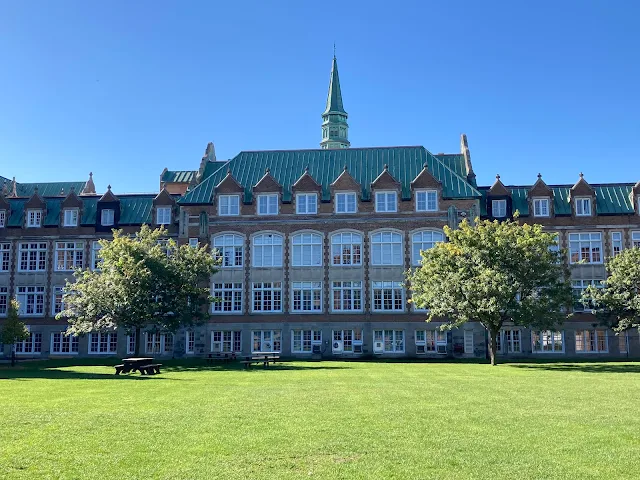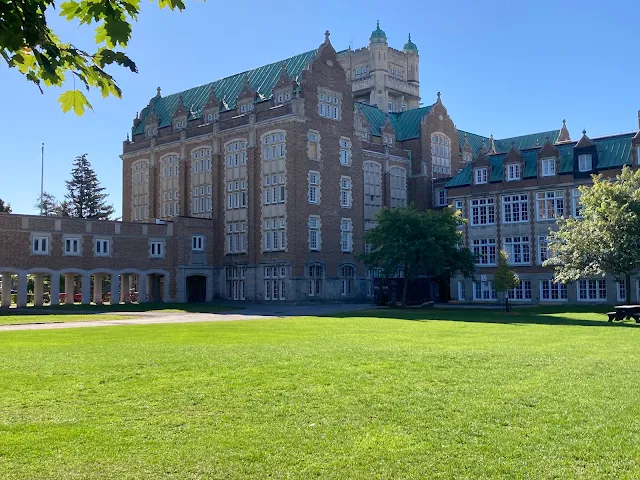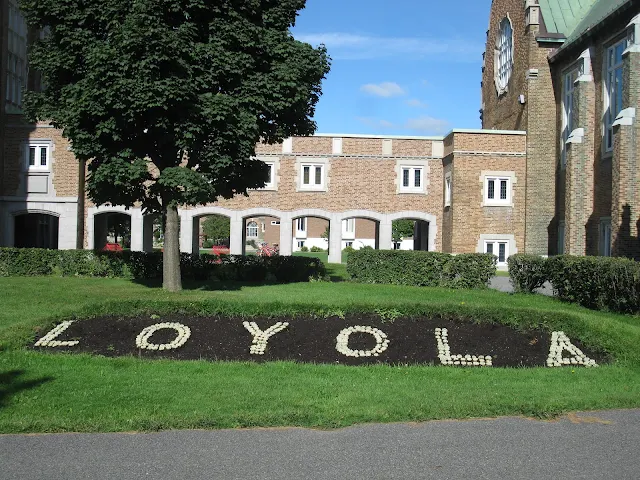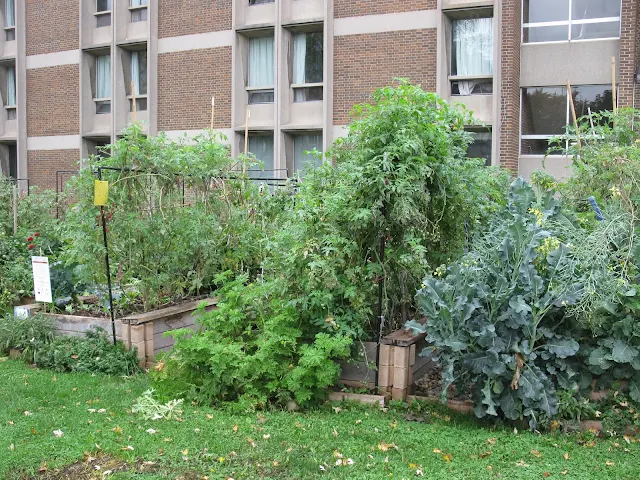Not far from where I live is the former Loyola College (on Sherbrooke Street West near West Broadway); it is now, as of 1974, a campus of Concordia University. Concordia University was created by the amalgamation of Sir George Williams University, which was associated with the YMCA, and Loyola College, which was a Roman Catholic institution. Loyola College is one more institution built by Montreal's Irish community, as is St. Mary's Hospital. The college seems to have retained its heritage and religious foundation, as far as this is possible in today's secular world. Hingston Residence is on the campus, William Hingston being an important historical figure in Montreal. There is a free shuttle bus service for students that takes you to the downtown campus in a half hour, or less depending on traffic. Vanier Library is found here as are newer science buildings.
Photographs taken the morning of 9 September 2023.
This is the new science hub at Concordia; visit the science hub located on the Loyola Campus.

















































